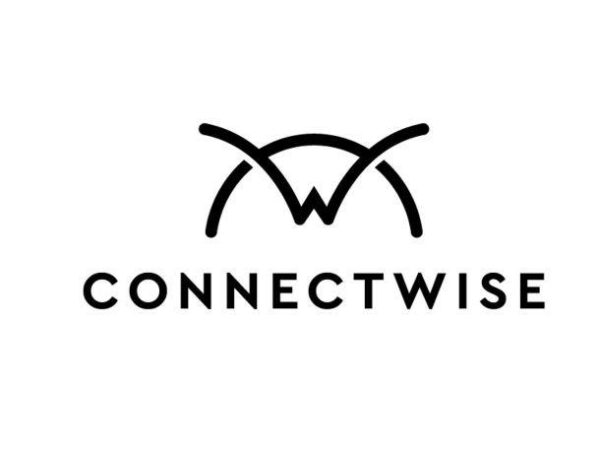Growth Achievement Partners’ Chris Ryne shares actionable tips for building a successful managed services business.
If there were any office imaging industry lessons to be learned from the COVID-19 pandemic, it’s that dealers who had invested in managed services were better positioned to navigate customers’ work-from-home landscape than those who had not expanded into managed services.
That’s not to say managed services has been a total panacea for the widespread downturn in business. Still, it did keep the sales funnel flowing in some organizations, even as the funnel turned to a trickle in others.
Now that there is a light at the end of this deep, dark tunnel, managed services will become more important than ever. There is a distinct possibility that more dealers will start thinking seriously of adding managed services to their offerings, while others will enhance their current managed services operations. Customers and prospects who may have been cool about engaging with you for managed services pre-pandemic will likely be more inclined to listen now.
If you are thinking about moving into the managed services space or ramping up your existing managed services business, consider what it takes to be successful in this space.
Partner Instead of Building It Yourself
It’s always surprising to us when reviewing the results of our Annual Dealer Survey how many dealers offering managed services have built it themselves. Last year, 57% of the respondents said they did. However, that may not be the best approach, according to Chris Ryne, partner with Growth Achievement Partners, a firm that offers strategy, business model, sales, operations, and MSP merger and acquisition consulting services to independent dealers and MSPs.
“This one has always puzzled me a bit because nobody builds their own copier, nobody builds their own printer, nobody builds their own document management system,” said Ryne.
He recalls a time when dealers thought they had to build their own data center, NOC, or help desk. Now, SOCs (security operations centers) have also entered the mix. Instead, he recommends finding the best partner who can provide most of those capabilities, while the dealer is responsible for pre-sales, onsite service, and account management.
“Just as you’ve gone to market in the office equipment space, this is the way you go to market here,” said Ryne. “Some things you’re going to take total control over, some you’re going to rely on your partners for, especially in the managed services space, because it moves so fast and there’s so much to know. Today, many of the more mature dealers still partner for NOC, data center, and now SOC, and have brought some or all of the help desk back in-house.”
Once you have a partner, leverage them the same as you do your technology and solutions providers.
What to Look for in a Partner
A viable managed services partner doesn’t sell direct and has tenure and critical mass in the market, which means they are less likely to be acquired. Indeed, it’s not unusual for a dealer to partner with a provider that gets acquired, only to discover that they no longer have the same partner relationship as they did before the acquisition.
Also important is an appropriate margin expectation for you and your partner.
“This all shouldn’t be the partner getting all the money, and it shouldn’t be the provider getting all of the money,” said Ryne. “There should be some fair distribution based on the level of effort.”
Ryne’s best clients review their product portfolios and pricing strategies quarterly while also thinking about what’s next and what’s an adjacent opportunity.
Develop a VCIO (Virtual CIO)
A VCIO is essentially a customer-facing CIO or CTO who oversees the managed services customer relationships.
“VCIO development has been a foundational element of my consulting practice since its inception,” stated Ryne. “We want to help build and develop the best VCIOs because they are the program differentiators. The best VCIO wins!”
The VCIO is the trusted advisor and technology advocate for the business, which Ryne says is a differentiation opportunity. They are involved in pre-sales and post-sales. These are individuals with business acumen who are comfortable with their hands on the keyboard and the whiteboard.
“They walk into a business and there’s an opportunity to go left to the server room or right to the boardroom,” said Ryne. “They prefer to go to the boardroom and talk about business goals and business outcomes, and how they can potentially leverage technology to fix problems.”
Create Confidence in Your Sales Reps
One of the biggest challenges that sales reps have is getting appointments, particularly now.
One way to help overcome that is by establishing rep confidence.
“One of the ways to get the rep confidence and help kickstart MS lead activity is not with a super great comp plan,” said Ryne. “Just give them the stats so they know what a good job the service team is doing.”
He maintains it is often more challenging for a rep to sell managed services to existing clients than new clients because they are afraid of screwing up an existing relationship.
“The rep needs to be confident that the reward is greater than the risk,” said Ryne, who added that historically, when most dealers start a managed services business, almost 70% of the initial orders are from non-office equipment clients. One reason for that is because the rep’s day-to-day contact within the office equipment accounts is not at the executive level.
“We get kind of relegated or comfortable with the person that’s authorized to sign the copier account or the person that places the service calls so we’re not in an executive level in the sales conversation,” observed Ryne.
That’s part of it, but he added the real rep confidence challenge is best compared to the historical reference of data points reps have on office equipment.
“What I mean by that is you need to share the statistics on service delivery and the outcomes your program is delivering, and it needs to be as rote as it is for the office equipment reps on the office equipment side,” emphasized Ryne. “The office equipment side has a 60-year head start on service delivery and confidence.”
Reps with a history of selling office equipment know how a deal is priced, processed, delivered, set up, and supported. They know who supports it, the tech’s tenure, the value of the car stock at any given moment, average response time, first call effectiveness rate, and the PM schedule.
“Reps don’t have the same perspective about that on the IT services side,” acknowledged Ryne. “They don’t have the equivalent statistics to make themselves comfortable.”
And if that information is available, they might not even be aware that it is and that it is something they can share with a client.
“I’ve had lots of clients where I’ve said, why don’t you just start sharing the statistics, and oftentimes, the reps are blown away that they’re supporting X amount of customers with X amount of uptime and X amount of this and X amount of that,” said Ryne. “It’s an easy way to establish rep confidence because you will ultimately be able to deliver better service, faster triage, faster turnaround, and more up time on the IT services than in your traditional business just by the nature of the way in which you deliver the service. Ultimately, it’s going to be the best service, and in some cases it already is. It’s just not widely communicated.”
Pick the Right Customer
Dealers who have been involved in managed services for some time often tell Ryne the one thing they would have done differently when they started was be more disciplined in identifying the right managed services customer. Instead of viewing every business as a prospect, they would have looked more closely at company size, the prospect’s existing IT support structure, their technology, and their budget.
“A lot of dealers took on accounts they wouldn’t take on today because they wanted to get some momentum,” said Ryne. “It hampered them because the clients weren’t the right fit or didn’t buy into the program.”
“Own the Network, Own the Client” is No Longer Relevant
“I’m sure you’ve heard the term, own the network, own the client,” noted Growth Achievement Partners’ co-founder Chris Ryne. “It’s not as relevant anymore. It’s own the technology roadmap, own the client, because the network’s only a portion of what’s going on and as we’ve seen today [with COVID-19], the network has become incredibly remote. There are all kinds of networks, or we might not even be on our network.”
He explains that people access information in different ways so there needs to be an owner for the technology roadmap.
“The technology roadmap not only encapsulates the network infrastructure, the applications, users, the support of those users, the data, the security, and all the things that you provide in your managed services program but it’s also the critical vehicle for expansion and retention,” said Ryne.
The person who needs to manage that roadmap is, you guessed it, the VCIO (virtual CIO).
“When you’re doing your technology roadmap, you’re establishing budgeting and timelines, getting in front of strategic industry or business trends and opportunities, and you’re ultimately implementing previously agreed upon technology,” said Ryne. “Managed services has transitioned from delivering services to delivering outcomes, and this is a big part of delivering on that.”
Buy Now
Besides partnering, acquiring an MSP is another viable option on the path to success.
“It doesn’t have to be a giant one, it may be a geographic expansion,” said Ryne. “Oftentimes, you have to go outside of your current staff to find that VCIO [virtual CIO] and people that understand service delivery in this model.”
Even though many MSPs don’t have large account bases, dealers he’s worked with have pulled the trigger on those acquisitions based on the number of copiers they could potentially sell to that client base.
“It’s a strategic move for numerous reasons, which is why we’ve done so many of them,” said Ryne.
Access Related Content
Visit the www.thecannatareport.com. To become a subscriber, visit www.thecannatareport.com/register or contact cjcannata@cannatareport.com directly. Bulk subscription rates are also available.



